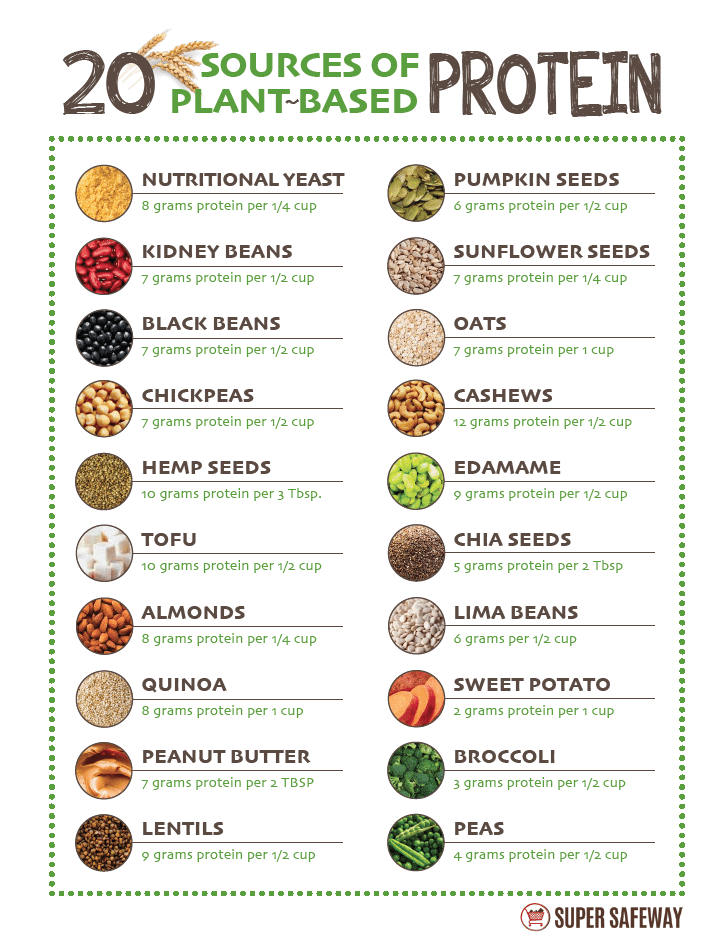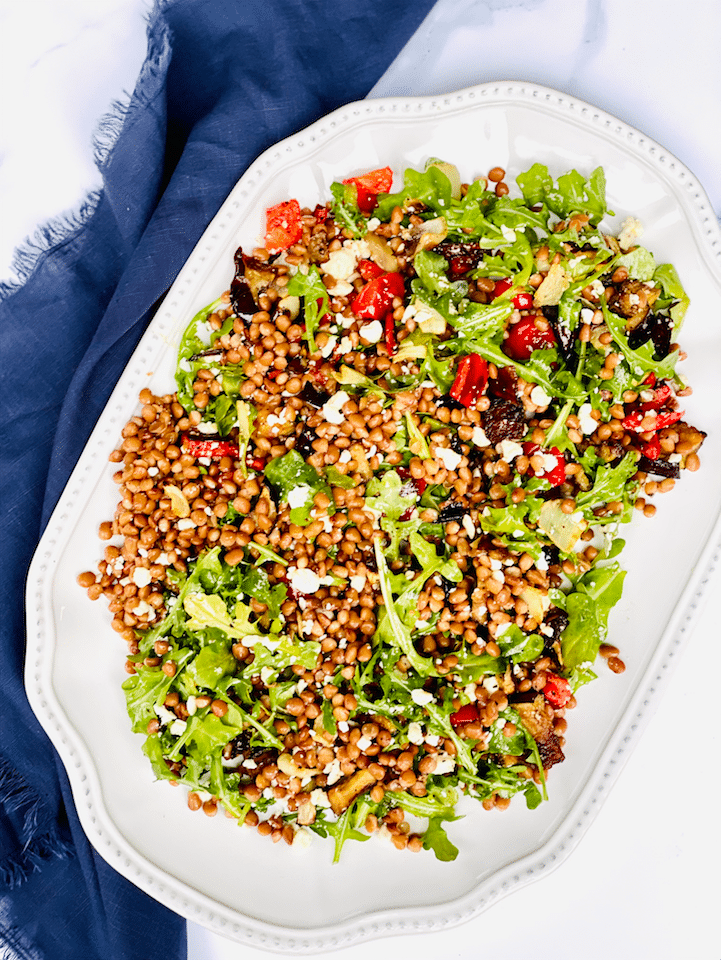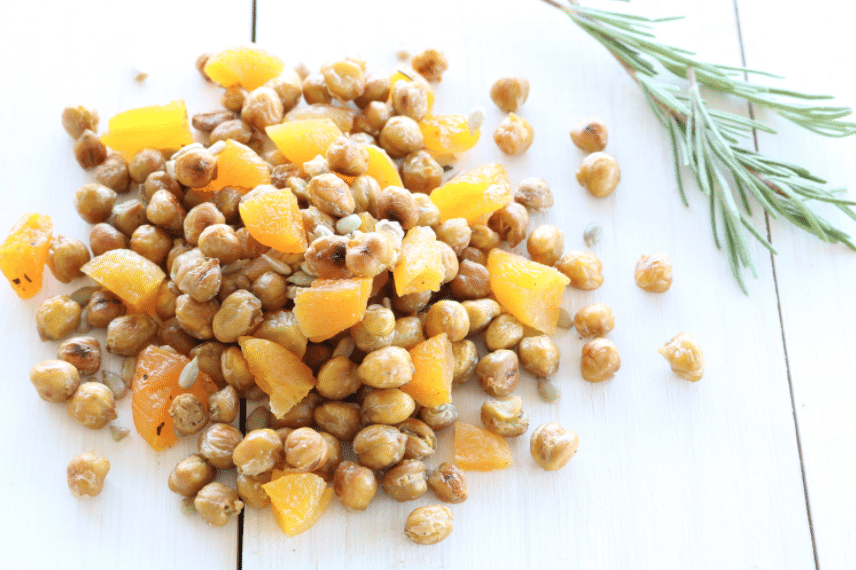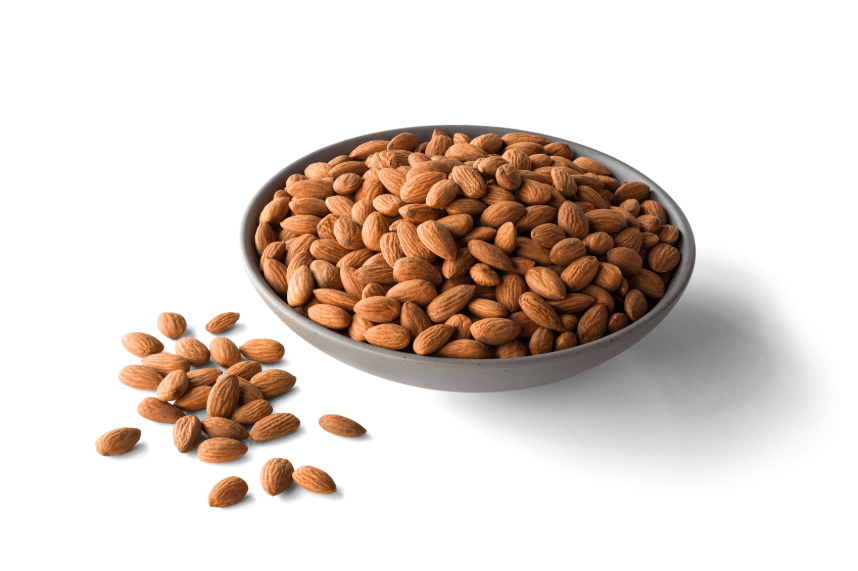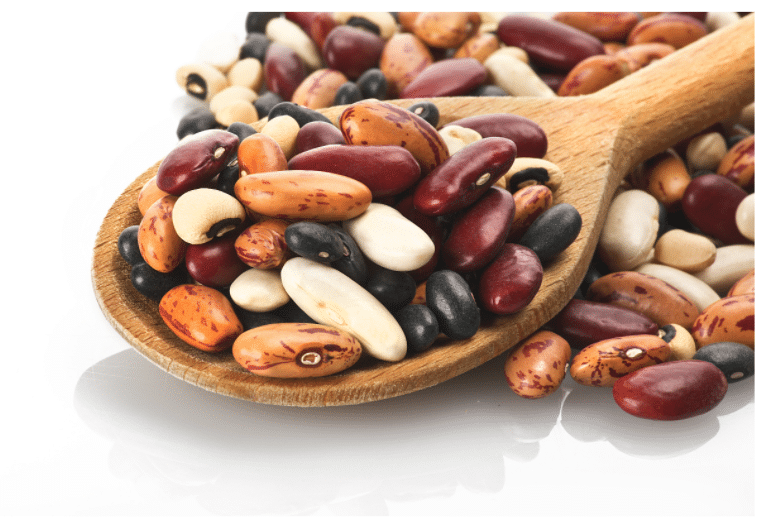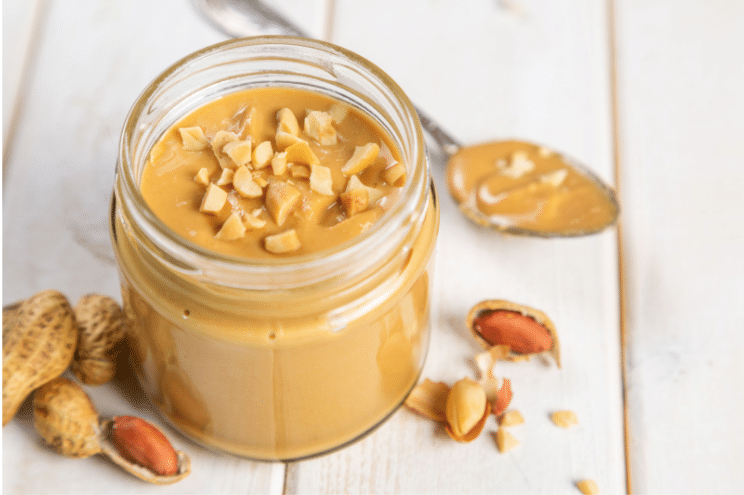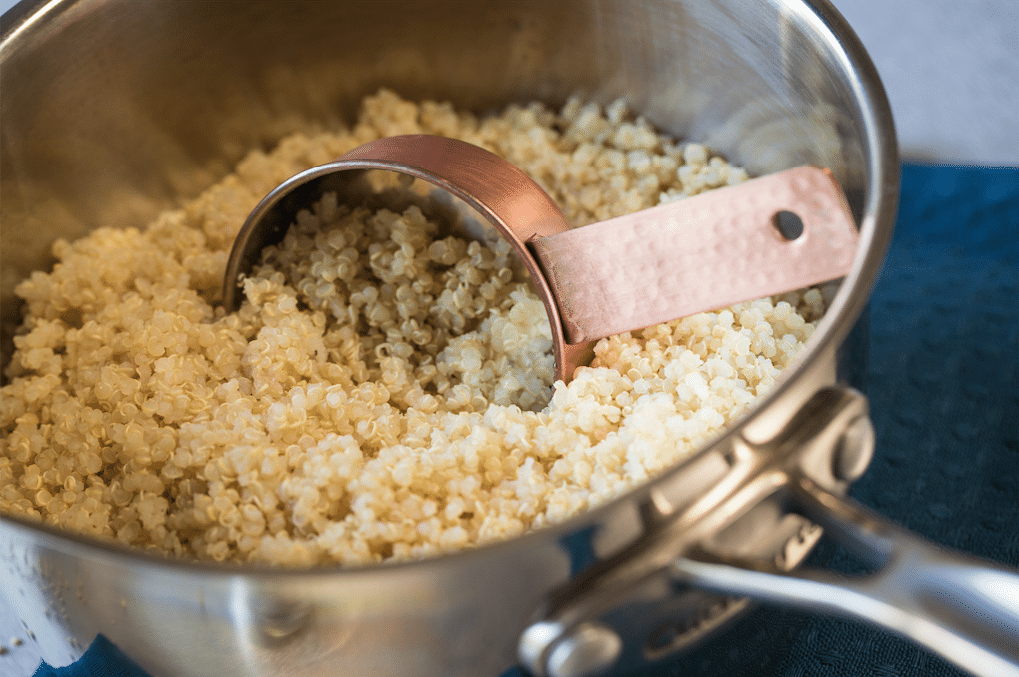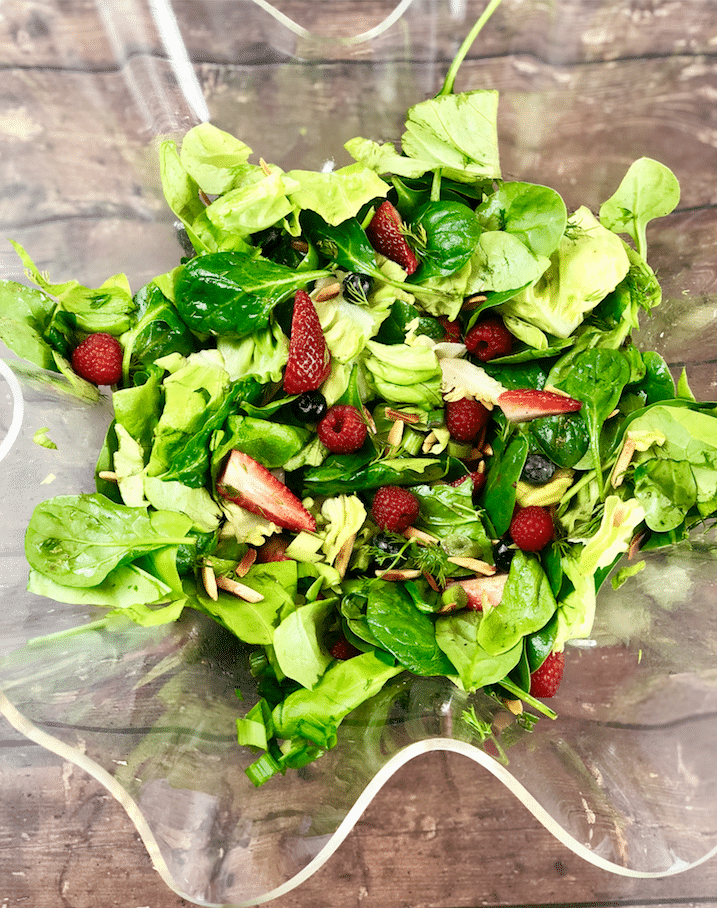Eating a plant-based diet is not just good for our health; it is good for Earth’s health.
April is Earth Month, so we wanted to provide a resource of the best plant-based sources of protein to celebrate the month.
Plant-based means incorporating more plant products and plant proteins into your daily diet without completely eliminating animal products. Basically, plant-based can mean upping your veggie intake and reducing your intake of animal products, or removing certain types of animal products from your diet.
According to UCLA Professor, Dana Hunnes, PhD, MPH, RD, “If each and every person in the United States gave up meat and dairy products on one or more days of the week; ideally, all days of the week, we would save the environment from thousands of tons of carbon emissions.”
You can actually get all of your protein needs by following a 100% plant-based diet. You simply need to know what foods and combinations of foods to eat to get all the essential amino acids that make up a complete protein.
Benefits of Plant-Based Diets:
The health benefits of a plant-based diet are well-documented. “Eating more plants and cutting back on meat is almost always a good thing, as research tells us consuming a plant-based diet can help reduce our risk of developing chronic conditions like diabetes, obesity, and heart disease,” says Julie Andrews, R.D.N., C.D., a dietitian and chef who owns The Gourmet RD. There’s also evidence that suggests breast cancer rates are lower in those who stick to a plant-based diet, according to Shape magazine.
Additionally, it’s better for the earth when we consume a plant-based diet because fewer resources are utilized in getting the plants from the field to your plate than in getting animals from the field to your dinner table because those live higher on the food chain.
Pound-for-pound, gallon-for-gallon, animal-sourced foods use vastly more water and carbon to produce than plant-based foods. However; ounce-for-ounce, the amount of protein that you get from plant sources, such as legumes, seeds, and grains, is closely on par, plus full of other healthful nutrients including fiber, vitamins and minerals.
Ways to Incorporate More Plants into your diet:
If you just want to start incorporating more plant-based meals into your weekly meal planning, slipping in more fruit, veggies or nuts every day is an easy solution.
You don’t need as much protein as you think. The average woman needs about 46 grams of protein and the average man needs about and 56 grams of protein per day.
Replace your morning toast with a nutritious smoothie or fruit-filled overnight oats.
Swap a salad for that burger at lunch and to step it up even further, swap a meat meal for a meatless meal one night a week.
Meatless Monday is a great plan to follow because it’s consistent and you only have to prep for a healthful and delicious meatless meal one night a week.
You’ll not only see a benefit to your waistline but to your wallet as well because fruits, vegetables, legumes, and whole grains are much cheaper to purchase than meat.
Related Reading: See how to store vegetables for maximum freshness
Which Plant-based Foods Have Complete Protein Sources?
There are many plant-based proteins that contain all 9 essential amino acids and others, that when paired together, give you a complete protein. Here are 7 plant-based complete proteins:
- Quinoa
- Buckwheat
- Tofu, Tempeh, and edamame
- Hemp Hearts
- Chia Seeds
- Pumpkin Seeds
- Chickpeas
Also, it’s important to remember that any time a grain (like rice, wheat, or corn) is combined with a legume (like beans, lentils, or peanuts) you have a complete protein. That means a snack like toast and peanut butter, rice and beans, or hummus and pita all contain a complete vegan protein source.
Best Plant-Based Sources of Protein
Lentils
Lentils are legumes—cousins to beans, chickpeas, soybeans, and peanuts. The name “lentil” actually comes from the Latin word for “lens,” which makes sense since the dried bean looks like a little lens. Like many other beans, they’ve been used in cooking for centuries and are thought to have originated in the Near East. But they’re routinely cultivated (and a part of the cuisine) throughout Europe, Asia, and North Africa. Lentils are available in a few varieties or colors – yellow, brown, red, green, black. Delicious in stews, soups, and as an alternative to meat for vegan sloppy joes, lentils are full of fiber and nutrients.
Protein in Lentils: 9 grams per 1/2 cup
Recipe using Lentils
Roasted Vegetable Lentil Salad
Chickpeas
Chickpeas, otherwise known as garbanzo beans are very rich in fiber. Chickpeas are a complete protein, which means they have all 9 essential amino acids. They are a mainstay in many cultures making appearances in middle eastern foods like hummus and falafels and Indian curries and stews. There are many ways to use chickpeas, either as whole beans or as flour. Chickpeas are delicious roasted or straight from a can, when rinsed and added to a salad, soup or stew. You can use chickpea flour as a substitute in some recipes for all-purpose flour to increase the protein and make the dish gluten-free like in these vegan strawberry crepes.
Protein in chickpeas: 7 grams per 1/2 cup
Easy ways to use chickpeas:
- Mash them into hummus
- Roast them for a savory, crunchy snack
- Use as a salad topper
Recipes using this plant-based protein source:
Roasted Asparagus & Chickpea Salad
Nuts like Almonds and Cashews
Almonds and cashews are great sources of plant-based protein. Almonds contain lots of healthy fats, fiber, protein, magnesium and vitamin E. The health benefits of almonds include lower blood sugar levels, reduced blood pressure and lower cholesterol levels. They can also reduce hunger and promote weight loss.
Protein in Almonds: 8 grams of protein in 1/4 cup
Protein in Cashews: 12 grams of protein per 1/2 cup
Easy ways to use almonds and cashews:
- eat a handful as a healthy and nutritious snack
- add to your morning oatmeal
- enjoy as a nut butter in a smoothie, over yogurt,
- ass to salads to add a nutritious crunch
Recipes using Nuts
Spinach Salad With Berries, Almonds and Dill
Beans and Peas
Black beans, kidney beans, white beans all have a similar nutrient profile. High in fiber and in protein, a diet rich in beans may help reduce blood sugar and insulin resistance. Eating more beans and legumes as a source of protein instead of meat is also environmentally friendly. Add them to soups, stews and salads, or just eat them on their own for a nutritious vegetarian meal.
Protein in Beans: 7 grams of protein per 1/2 cup
Recipes using beans
Peanut Butter
A pantry staple, eating peanut butter is an easy way to get protein in your diet. Peanut butter provides a good amount of protein, along with essential vitamins and minerals, such as magnesium, potassium, and zinc. There are so many ways to enjoy peanut butter.
- Slather it on toast with banana slices
- Toss into a peanut butter chocolate smoothie
- Make peanut butter protein balls
- Use as a topper for oatmeal
- Dip fruit and celery sticks
- Make a savory peanut butter sauce or dressing
Protein in peanut butter: 7 grams in 2 tablespoons
Recipes Using Peanut Butter
Quinoa
Quinoa is an incredibly popular source of plant-based protein because it is a gluten-free grain, high in protein, and one of the few plant foods that contain sufficient amounts of all nine essential amino acids to be considered a complete protein. It is also high in fiber, magnesium, B vitamins, iron, potassium, calcium, phosphorus, vitamin E and various beneficial antioxidants
Protein in quinoa: One cup of cooked quinoa contains 8g of plant-based protein.
Recipes using quinoa
Spinach artichoke & quinoa stuffed peppers
Sun-dried Tomato and Quinoa Chicken Skillet
Savory Chicken With Lime Quinoa
Green Leafy Vegetables have Protein Too
While not a complete protein, you can combine green leafy vegetables like kale and spinach with other proteins like beans in stews and soups to get the complete protein you need.
Spinach and kale have 3 grams of protein per 1 cup
Broccoli has 3 grams of protein per 1/2 cup
Peas have 4 grams of protein per 1/2 cup
Sweet Potatoes have 2 grams of protein per 1/2 cup
Lima beans have 6 grams of protein per 1/2 cup
Recipes using plant-based proteins
Spicy Sweet Potato and Black Bean Soup
Sweet Potato and Black Bean Enchiladas
Related Reading: Foods that Boost Immunity
SuperSafeway is a blog devoted to helping you find the best deals at Safeway in the Denver division. Every week we slice and dice the ad and tell you the best deals at Safeway with and without coupons. For more low prices, check out Super Safeway’s weekly ad coupon matchup page. Want to stay updated on the best deals? If so, make sure to like Super Safeway on Facebook, join our Facebook group, follow us on Twitter, Instagram, or Pinterest and subscribe to our newsletter.
* Please note – Savings information is based on Colorado pricing and the Safeway Coupon Policy for the Denver Division which includes Colorado, Nebraska, New Mexico, Wyoming and South Dakota. Your market may vary. *

